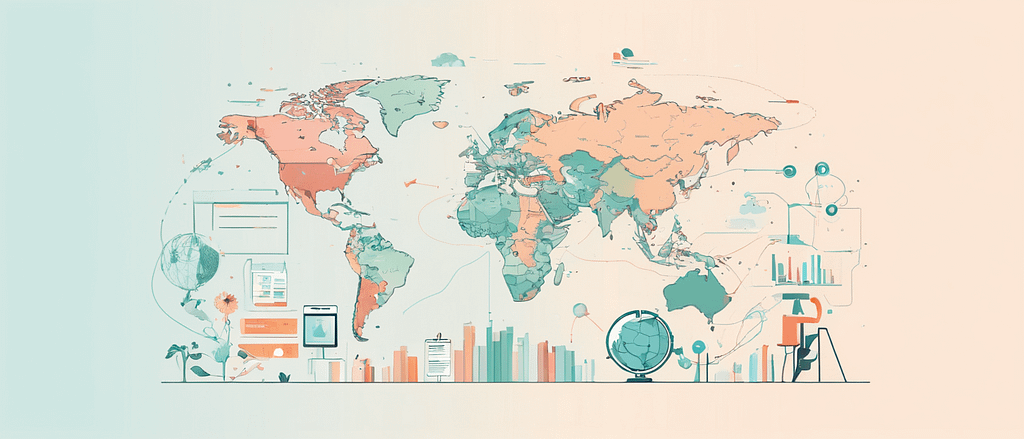Increasing Transparency in Decision-Making: Ensuring Accountability and Public Trust
In today’s complex societies, decision-making is often driven by experts in fields like science, technology, economics, and policy. These experts play a crucial role in shaping the future of countries and the global community by providing data-driven, knowledgeable recommendations on issues that impact millions of lives. However, there is a growing concern about the transparency of expert decision-making and the need to ensure that the decisions they make truly serve the public interest.
Transparency in decision-making is more than just a principle of good governance—it is essential for fostering public trust, maintaining accountability, and ensuring democratic oversight. Citizens must be able to understand the decisions taken by experts, scrutinize them, and feel confident that these decisions are being made for the greater good, not for the benefit of a select few. By increasing transparency, we empower citizens to actively participate in the democratic process, hold experts accountable, and ensure that policies are aligned with the public’s best interests.
This article explores the importance of increasing transparency in expert decision-making, the challenges in achieving it, and the potential ways to implement a more transparent system that ensures accountability and fosters public trust.

Why Transparency in Decision-Making Matters
Transparency in decision-making means that the processes, rationales, and data used by experts to arrive at a conclusion are open and accessible to the public. This allows for a clearer understanding of the decisions made and helps in building trust between experts and citizens. Transparency matters for several reasons:
1. Trust in Expertise and Institutions
In modern societies, citizens often rely on experts for important decisions regarding health, safety, economy, and governance. These decisions range from public health measures (such as in a pandemic), environmental regulations, economic policies, and even technological innovations that affect daily life. Transparency helps build and maintain trust between citizens and experts, ensuring that people believe that expert decisions are made with their best interests in mind.
When the decision-making process is opaque or perceived as secretive, it can breed suspicion, leading citizens to question the legitimacy of those decisions. Trust is essential for the effective functioning of any society, and without it, citizens may become disengaged, cynical, or resistant to expert advice, even when it is based on sound evidence. Transparency thus serves as a key factor in enhancing public confidence.
2. Accountability and Oversight
Transparency ensures that experts and decision-makers remain accountable for their actions. If the public has access to the information and reasoning behind decisions, they can evaluate whether these decisions are being made ethically and in line with public interest. A lack of transparency can lead to decisions that prioritize the interests of elites, corporations, or political groups over the broader public.
Accountability mechanisms allow for proper oversight, ensuring that experts are not acting unilaterally or with unchecked power. Transparency fosters an environment where decision-makers know they will be held accountable for their actions, discouraging corruption, favoritism, or negligence.
3. Informed Public Participation
One of the pillars of democracy is the right of citizens to participate in decision-making processes. However, for participation to be meaningful, citizens must have access to clear and accurate information. Transparency ensures that the public can engage with the issues that affect them, leading to more informed debates and discussions.
When citizens understand the rationale behind decisions, they are more likely to accept or challenge those decisions based on facts rather than rumors or misinformation. This informed participation is crucial for fostering a healthy democratic process where the public can advocate for or against policies based on their knowledge and interests.
4. Improving Decision Quality
When decisions are made transparently, they are open to scrutiny not only from the public but also from other experts, stakeholders, and independent observers. This scrutiny can lead to the identification of potential flaws, biases, or overlooked factors in the decision-making process, ultimately improving the quality of decisions.
Transparent decision-making encourages a culture of continuous improvement, where feedback and peer review are integral parts of the process. By opening decisions to public and expert critique, institutions can ensure that the best possible decisions are made, balancing the needs and concerns of all affected parties.

The Challenges to Achieving Transparency
While transparency is widely recognized as essential for good governance, achieving it is not always straightforward. Several challenges stand in the way of creating a transparent system of decision-making:
1. Complexity of Information
Many decisions made by experts are based on complex data, technical knowledge, or specialized research that may be difficult for the general public to understand. For example, decisions related to climate change, public health policies, or economic regulations often involve highly technical discussions that require expertise in fields such as epidemiology, environmental science, or macroeconomics.
Ensuring transparency in such cases requires not only making information available but also ensuring that it is presented in a way that is comprehensible to non-experts. This challenge is further compounded by the risk of oversimplification, where nuanced or intricate details are lost in translation, potentially leading to misunderstanding or misinterpretation.
2. Confidentiality and Security Concerns
In some cases, transparency may be limited by legitimate concerns about confidentiality, security, or privacy. For example, when making decisions about national security, public safety, or sensitive economic policies, disclosing too much information could compromise the effectiveness of those decisions or endanger individuals and institutions.
Balancing the need for transparency with the need to protect sensitive information is a delicate task. While it is important for citizens to understand the rationale behind decisions, decision-makers must also ensure that transparency does not lead to unintended negative consequences.
3. Political and Corporate Influence
Another challenge to transparency in decision-making comes from political and corporate interests that may seek to influence expert decision-making for their own benefit. Lobbying, special interest groups, and corporate pressures can affect the decision-making process, leading to biased or skewed outcomes that do not serve the public interest.
In such cases, transparency can be difficult to achieve because decision-makers may not want to disclose the extent of external influence on their decisions. This lack of transparency can erode public trust and lead to perceptions of corruption or undue influence.
4. Bureaucratic Barriers
Large institutions and bureaucracies often have established processes and hierarchies that can impede transparency. In some cases, the decision-making process may be deliberately opaque due to institutional inertia, resistance to change, or a desire to maintain control over information. These bureaucratic barriers can make it difficult for the public to access the information they need to understand how decisions are made.
Reforming these systems to prioritize transparency can be challenging, particularly when there are entrenched interests or resistance from within the organization.

Implementing Transparency: Key Strategies
To increase transparency in decision-making, a combination of cultural, institutional, and technological reforms is needed. Below are some key strategies for promoting transparency:
1. Open Access to Data and Information
One of the most effective ways to promote transparency is to provide open access to the data and information used in decision-making processes. Governments, institutions, and experts should make their data publicly available, allowing citizens, researchers, and independent bodies to analyze and interpret it.
For example, many governments and international organizations now release open data related to public health, environmental monitoring, and economic indicators. By making this data accessible, these institutions allow for independent verification of their decisions and foster greater public trust.
2. Clear Communication of Decisions
Experts and institutions must prioritize clear communication when explaining their decisions to the public. This includes not only making the data available but also providing context, rationale, and explanations in plain language that non-experts can understand.
Creating easy-to-digest summaries, visualizations, and reports can help bridge the gap between technical complexity and public understanding. This approach ensures that citizens are not overwhelmed by data but are provided with the tools they need to engage meaningfully with the information.
3. Public Consultations and Feedback Mechanisms
To enhance transparency and accountability, decision-making processes should include opportunities for public consultation and feedback. Institutions can hold public hearings, online forums, or consultations where citizens can ask questions, raise concerns, and provide input on decisions that affect them.
Feedback mechanisms should also be integrated into the decision-making process, allowing for continuous assessment and improvement. By incorporating public feedback, experts can better understand the concerns and perspectives of the people they serve and make decisions that are more aligned with the public interest.
4. Independent Oversight and Auditing
Independent oversight bodies play a crucial role in ensuring transparency and accountability. These bodies, such as ombudspersons, audit commissions, or ethics committees, can review expert decisions, assess the processes involved, and ensure that decisions are made in the public’s interest.
These oversight bodies should operate independently from the decision-makers they are tasked with reviewing, ensuring that they can provide impartial and objective assessments of the transparency and fairness of the decision-making process.
5. Utilizing Technology for Transparency
Advances in technology offer new opportunities for enhancing transparency in decision-making. Blockchain, for example, has been explored as a tool for creating transparent and tamper-proof decision-making processes, where each step is recorded and accessible for review.
Additionally, digital platforms can facilitate the sharing of data, public consultations, and feedback loops, allowing for real-time interaction between decision-makers and the public. Online transparency portals, where citizens can track decisions and access relevant documents, are already in use in many governments and organizations.

Conclusion
Increasing transparency in expert decision-making is essential for fostering public trust, ensuring accountability, and enhancing democratic participation. While there are significant challenges—such as the complexity of information, confidentiality concerns, and political influences—there are also numerous strategies that can help overcome these obstacles.
By promoting open access to data, improving communication, involving the public in consultations, and ensuring independent oversight, we can create a more transparent decision-making process that serves the public interest. Ultimately, transparency is not just a matter of good governance; it is a cornerstone of a healthy democracy where citizens are empowered to understand, engage with, and influence the decisions that shape their lives.
In a world increasingly reliant on expert decision-making, transparency ensures that experts remain accountable to the people they serve and that their decisions are made in line with the greater good.